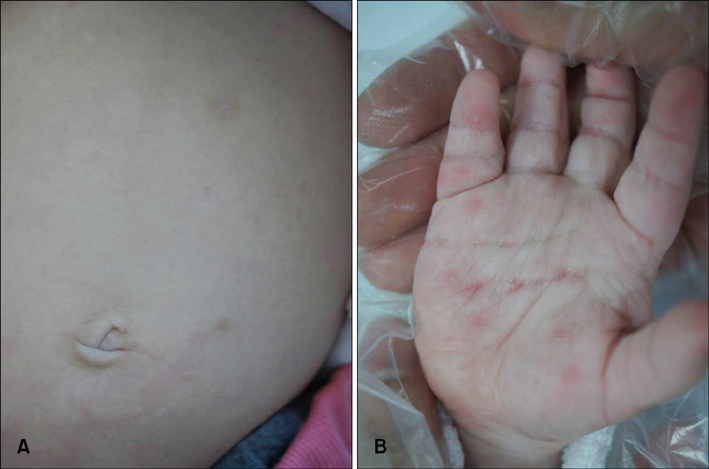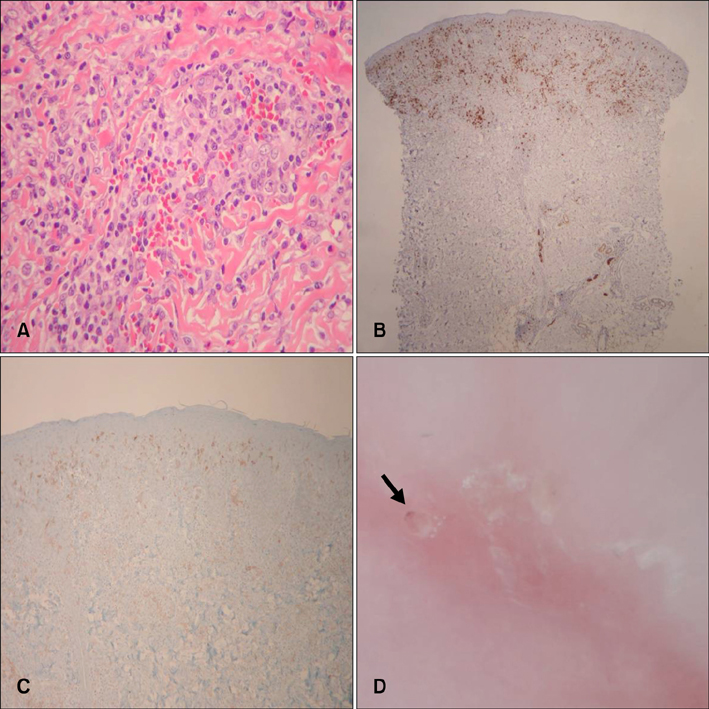Ann Dermatol.
2015 Jun;27(3):349-351. 10.5021/ad.2015.27.3.349.
Infantile Scabies Masquerading as Langerhans Cell Histiocytosis
- Affiliations
-
- 1Department of Dermatology, Hallym University College of Medicine, Seoul, Korea. dermap@hanmail.net
- KMID: 2352518
- DOI: http://doi.org/10.5021/ad.2015.27.3.349
Abstract
- No abstract available.
MeSH Terms
Figure
Reference
-
1. Chosidow O. Scabies and pediculosis. Lancet. 2000; 355:819–826.
Article2. Hicks MI, Elston DM. Scabies. Dermatol Ther. 2009; 22:279–292.
Article3. Peterson CM, Eichenfield LF. Scabies. Pediatr Ann. 1996; 25:97–100.
Article4. Bhattacharjee P, Glusac EJ. Langerhans cell hyperplasia in scabies: a mimic of Langerhans cell histiocytosis. J Cutan Pathol. 2007; 34:716–720.
Article5. Favara BE, Jaffe R. The histopathology of Langerhans cell histiocytosis. Br J Cancer Suppl. 1994; 23:S17–S23.
- Full Text Links
- Actions
-
Cited
- CITED
-
- Close
- Share
- Similar articles
-
- Spontaneous Pneumothorax due to Pulmonary Invasion in Multisystemic Langerhans Cell Histiocytosis: A case report
- Pulmonary Langerhans Cell Histiocytosis Accompanied by Active Pulmonary Tuberculosis
- A Case of Orbital Langerhans' cell histiocytosis
- A Case of Pulmonary Langerhans Cell Histiocytosis with Pneumothorax
- Adult Scapular Langerhans Cell Histiocytosis Mistaken for Acute Osteomyelitis



